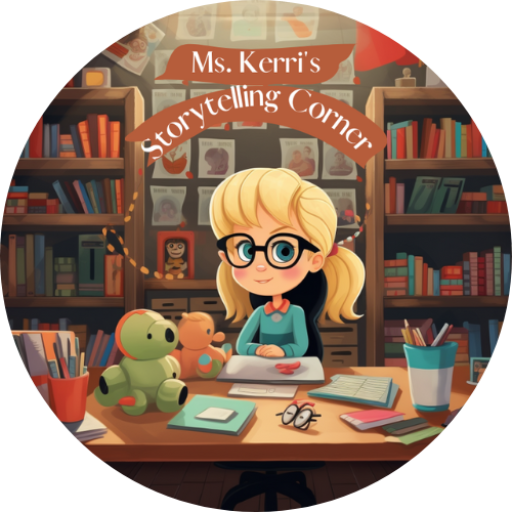Choosing a Story: Selecting the Perfect Bedtime Read for Your Child
I. Introduction: Unleashing the Power of Bedtime Stories for Child Development
In the enchanting realm of childhood, bedtime stories stand as more than just a pre-sleep ritual—they are key to unlocking a world of imagination, nurturing language skills, and forging emotional bonds. As parents embark on the nightly journey of storytelling, they aren’t merely recounting tales; they’re crafting a foundation for their child’s cognitive and emotional growth.
Fostering Imagination, Cultivating Language
Bedtime stories serve as a gateway to a child’s imagination, where the fantastical and whimsical take center stage. This imaginative escapade isn’t just a flight of fancy; it’s a crucial cognitive exercise. As narratives unfold, children visualize characters, settings, and scenarios, fostering creativity that extends far beyond the pages of the storybook.
Moreover, the language-rich environment created during storytelling contributes significantly to language development. Exposure to diverse vocabulary, sentence structures, and expressions aids in building a robust linguistic foundation, enhancing a child’s communication skills both in verbal and written forms.
The Calming Cadence of Consistent Bedtime Routine
Amid the chaos of daily life, a consistent bedtime routine, with storytelling at its core, offers a tranquil oasis for both parent and child. The calming effects of a well-chosen bedtime story signal to young minds that it’s time to unwind, fostering a peaceful transition from the day’s activities to the embrace of dreams.
Building Positive Associations with Reading
Beyond its immediate soothing effects, the bedtime story ritual plays a pivotal role in shaping a child’s attitude toward reading. Associating the act of reading with warmth, security, and shared moments with a loved one lays the foundation for a positive lifelong relationship with books.

Igniting the Spark: Promoting Early Love for Books
Early exposure to the magic of storytelling sparks a love for books that can last a lifetime. As children associate bedtime stories with joy, connection, and the allure of narrative, they naturally gravitate toward books as a source of pleasure, curiosity, and endless exploration.
II. Establishing a Bedtime Routine: Building Blocks for Healthy Sleep and Family Bonding
In the intricate tapestry of childhood, a well-crafted bedtime routine emerges as a linchpin, weaving together benefits that extend far beyond the night’s rest. Here’s a closer look at the profound advantages of establishing a regular bedtime routine:
Improved Sleep Patterns and Emotional Security
A consistent bedtime routine acts as a sleep cue, signaling to a child’s body and mind that it’s time to unwind. Scientifically proven benefits include improved sleep patterns, fostering a sense of security that lays the foundation for emotional well-being. The predictability of a routine reassures children, reducing anxiety and promoting a restful night’s sleep [1].
The Tranquil Transition: Reading as a Sleep Inducer
Central to a bedtime routine is the ritual of reading a bedtime story, a practice with profound calming effects. Engaging in a quiet and focused activity like reading aids in the transition to sleep by reducing arousal levels. The rhythmic cadence of storytelling serves as a lullaby for the mind, creating a serene atmosphere conducive to peaceful slumber.
Quality Bonding and One-on-One Time
Beyond its sleep-inducing effects, the bedtime routine carves out precious moments for quality bonding. The shared experience of reading fosters one-on-one time between the child and the reader, strengthening emotional connections. These moments are not just about stories; they are about shared laughter, curiosity, and the building of enduring relationships.
Soothing Bedtime Rituals: Crafting Comfortable Environments
Soothing bedtime rituals further enhance the routine. Dimming lights signals the body to produce melatonin, the sleep hormone. Cuddling and engaging in quiet activities before reading create an environment of warmth and tranquility. These rituals become anchors, marking the transition from the bustling day to the serenity of bedtime.
As parents curate these bedtime traditions, they lay the groundwork for healthier sleep patterns and forge enduring bonds, creating a sanctuary of comfort and connection within the embrace of a nightly routine.
III. Understanding Your Child’s Preferences: Tailoring Bedtime Stories for Maximum Impact

In the intricate world of bedtime stories, acknowledging and embracing your child’s individuality becomes a catalyst for an enriching reading experience. Here’s a closer look at the crucial aspects of understanding your child’s preferences:
Significance of Personalization
Choosing bedtime stories aligned with a child’s interests, hobbies, and favorite themes is akin to unlocking a treasure trove of engagement. Personalization transforms the bedtime routine into a bespoke experience, capturing their attention and kindling a genuine curiosity for the narrative. It’s not just a story; it’s a tailored journey into realms that resonate with their unique passions.
Impact on Engagement, Enjoyment, and Emotional Connection
The magic lies in the alignment – stories tailored to individual tastes profoundly impact a child’s engagement, enjoyment, and emotional connection to the narrative. When a tale mirrors their world or sparks fascination in their favorite subjects, it transcends storytelling; it becomes an immersive voyage that leaves lasting imprints on their imagination.
Tips for Effective Observation
Observing a child’s reactions to various stories and genres is an art. Pay attention to their expressions, verbal cues, and body language during storytelling. Take note of the tales that evoke enthusiasm, curiosity, or moments of laughter. These cues serve as valuable guides, unveiling the genres and themes that resonate most with your child.
Value of Involvement in Story Selection
Empower your child by involving them in the story selection process. Offer options that align with their preferences and allow them to voice their choices. This not only nurtures a sense of ownership over their bedtime reading experience but also instills a love for making literary decisions, fostering independence and a lifelong appreciation for storytelling.
As parents become attuned to the nuances of their child’s preferences, bedtime stories cease to be a routine and metamorphose into a personalized adventure, creating cherished memories and strengthening the parent-child bond.
IV. Age-Appropriate Selection: Nurturing Development and Values through Thoughtful Choices
In the vast landscape of children’s literature, tailoring stories to a child’s age is a paramount consideration. Here’s a closer look at the importance of age-appropriate selection and how it influences a child’s developmental journey:
Importance of Age-Appropriate Selection
Selecting stories tailored to a child’s developmental stage is crucial. These stories serve as scaffolding for cognitive growth, aligning with a child’s evolving comprehension skills, emotional intelligence, and moral understanding. Age-appropriate narratives create a bridge between the child’s current capacities and the next stage of their development, fostering a seamless and enriching reading experience.
Guidance for Choosing Stories
For younger children, opt for stories with simple text and vibrant illustrations. These elements not only capture their attention but also support language acquisition and visual literacy. As children progress, introduce longer, more complex narratives to stimulate cognitive development and promote sustained focus.
Role in Conveying Life Lessons and Values
Age-appropriate stories act as conduits for imparting invaluable life lessons and moral values. Themes relevant to a child’s age help in contextualizing these lessons, making them more accessible and relatable. Whether it’s sharing, empathy, or resilience, the stories become a medium through which children internalize and understand these essential principles.
Significance of Adapting Reading Style
Adapting the reading style and content based on a child’s age and comprehension level is a dynamic process. Younger children benefit from interactive reading styles, involving them in discussions about the story. Older kids, ready for more complex narratives, benefit from deeper conversations that explore nuanced themes, encouraging critical thinking and reflection.
In essence, age-appropriate story selection is a deliberate act of nurturing a child’s holistic development – from cognitive skills to moral compass – fostering a lifelong love for literature and learning.
V. Length and Content Considerations: Crafting Enriching Bedtime Experiences for Children
Ideal Length for Maximum Engagement
The ideal length of bedtime stories strikes a delicate balance, ensuring captivation without overwhelming a child’s attention span. Aim for stories that last around 5 to 15 minutes, aligning with the average attention span of children. This duration facilitates a calming transition to sleep, preventing fatigue and ensuring the bedtime routine remains enjoyable.
Content with Positive Impact
Story content plays a pivotal role in shaping a child’s values and perspectives. It is crucial that bedtime stories convey positive lessons, reinforcing good behavior and fostering empathy. Opt for narratives that promote understanding, kindness, and inclusivity, creating a bedtime environment that nurtures positive character development.

Examples of Engaging and Age-Appropriate Content
- Relatable Characters: Stories featuring characters with whom children can identify create a sense of connection and resonance.
- Gentle Humor: Incorporating gentle humor adds an enjoyable element, making the bedtime experience light-hearted and enjoyable.
- Meaningful Messages: Choose stories with meaningful messages that resonate with a child’s emotional and moral development.
Encouraging Curiosity, Creativity, and Critical Thinking
Select bedtime stories that spark curiosity, ignite creativity, and stimulate critical thinking. Stories with open-ended narratives, imaginative settings, and characters facing dilemmas inspire children to question, create, and analyze, fostering a holistic approach to cognitive development.
In essence, the ideal bedtime story, with an optimal length and enriching content, transforms bedtime into a valuable moment for learning, bonding, and fostering positive values in children.
VI. Exploring Diverse Genres and Themes: Nurturing Well-Rounded Readers
Encourage Exploration Based on Interests
Parents, embrace the opportunity to explore a rich tapestry of storytelling by aligning with your child’s interests. From thrilling adventures and enchanting fantasies to heartwarming tales of animals and real-life experiences, tailor your selections to captivate your child’s imagination.
Benefits of Story Variety
Diverse storytelling isn’t just a literary adventure; it’s a cognitive and emotional journey for children. Exposure to various genres and themes broadens their imaginative horizons, enhances cultural awareness, and deepens their understanding of the world. This multifaceted approach contributes to holistic child development.
Examples of Diverse Genres and Themes
- Folktales: Uncover the wisdom of different cultures through folktales, fostering an appreciation for diversity .
- Science Fiction: Propel young minds into futuristic worlds, igniting curiosity about the possibilities of science and technology.
- Historical Fiction: Transport children to different eras, instilling a sense of history and encouraging a nuanced understanding of the past].
- Stories from Different Cultures: Celebrate global perspectives, enriching children’s understanding of cultural differences and similarities.
Value of Inclusive Narratives
Introducing children to stories that celebrate diversity, inclusivity, and different perspectives fosters empathy and compassion. Such narratives instill a sense of openness and acceptance, shaping well-rounded individuals capable of navigating an increasingly interconnected world.
In essence, by encouraging exploration across diverse genres and themes, parents become architects of a literary journey that not only entertains but also educates, creating a foundation for a future generation with an enriched worldview.
VII. Interactive and Engaging Reading: Fostering Literacy through Playful Participation
Tips for Interactive Bedtime Reading
- Expressive Voices: Bring characters to life with animated and expressive voices. Distinguish characters through unique tones, creating an immersive experience.
- Sound Effects: Infuse excitement by incorporating sound effects. Mimic animal sounds, environmental noises, or use props to enhance the narrative.
- Encourage Participation: Foster engagement by encouraging children to participate. Prompt them to repeat phrases, finish sentences, or even act out parts of the story.
The Value of Enjoyable Reading Experiences
Creating a joyful reading atmosphere benefits both child and reader. A positive association with reading enhances the child’s attitude towards books and builds a foundation for a lifelong love of learning.
Benefits of Interactive Approaches
- Open-ended Questions: Pose questions that encourage creative thinking. This not only enhances comprehension but also stimulates the child’s imagination.
- Discussions: Engage in post-reading discussions. This promotes critical thinking, allows children to share their thoughts, and strengthens their communication skills.
- Predicting Outcomes: Encourage children to predict the story’s outcome. This activity enhances cognitive skills, logical reasoning, and narrative understanding.

Role in Child Development
Interactive reading plays a pivotal role in a child’s holistic development:
- Language Development: Active engagement promotes vocabulary expansion and language fluency.
- Critical Thinking: Discussions and predictions stimulate analytical thinking and problem-solving skills.
- Emotional Expression: Participation and discussions provide a safe space for emotional expression, aiding in social-emotional development.
In essence, bedtime reading transcends a mere storytelling activity; it becomes a dynamic platform for exploration, expression, and growth, setting the stage for a lifelong love affair with literature.
VIII. Conclusion
Key Points:
- Developmental Benefits: Bedtime stories play a crucial role in children’s development, enhancing language skills, cognitive abilities, and emotional intelligence.
- Imagination Enhancement: Engaging narratives stimulate a child’s imagination, fostering creativity and a broader worldview.
- Emotional Well-being: Regular bedtime reading creates a positive emotional environment, aiding in emotional expression and understanding.
Encouragement for Parents:
- Tip Consideration: Parents are encouraged to consider the provided tips for interactive and diverse bedtime reading experiences.
- Fostering Love for Reading: Selecting stories aligned with a child’s interests nurtures a love for reading and sets the stage for a lifelong passion for literature.
- Imagination Nurturing: Choosing diverse genres and themes broadens a child’s imagination and cultural awareness.
Importance of Positive Experiences:
- Building Foundations: Creating positive and memorable bedtime reading experiences builds a strong foundation for a lasting love of books.
- Lifelong Impact: The joy of storytelling instills a lifelong appreciation for literature, strengthening the parent-child bond through shared moments.
In conclusion, bedtime stories are more than a nightly ritual; they are a powerful tool for shaping a child’s holistic development. By embracing the suggested tips, parents can cultivate a love for reading, foster imagination, and lay the groundwork for a future of literary exploration and shared stories.

Ms. Kerri’s Corner provides a exciting virtual space for preschool learning. Through a variety of engaging activities, she exposes young minds to early math, literacy, science and social-emotional skills in a developmentally appropriate way. Centers for blocks, art, books and music allow children to explore hands-on learning at their own pace. Guided lessons subtly introduce number sense, letter sounds and narrative thinking. Careful observation gives insight into each child’s progress across domains. Viewers are also invited to participate, reinforcing that their ideas are valued. By making learning fun yet purposeful, Ms. Kerri lays the groundwork for future academic success while fostering creativity and imagination. Her program offers preschoolers valuable screen-based learning experiences.



